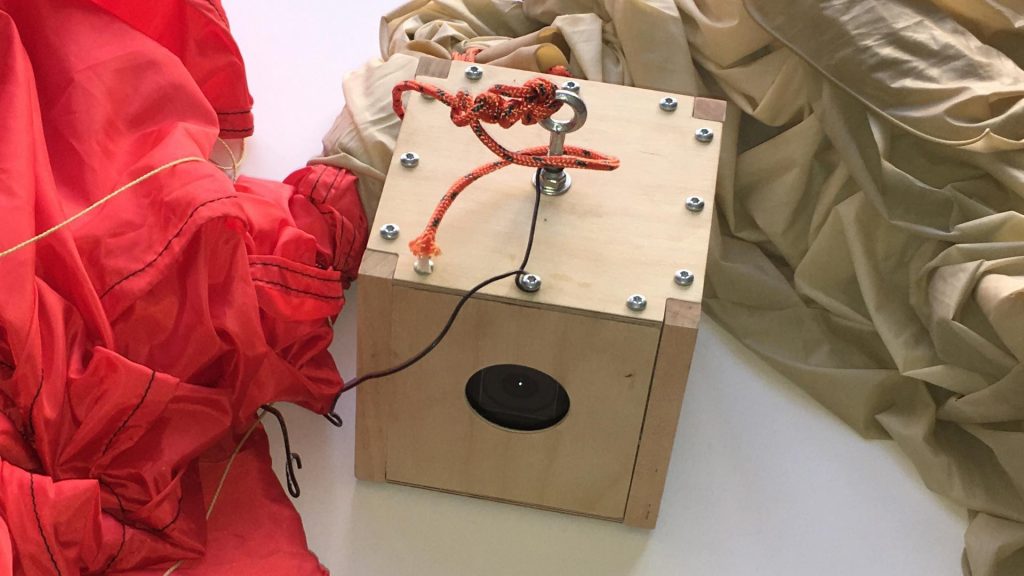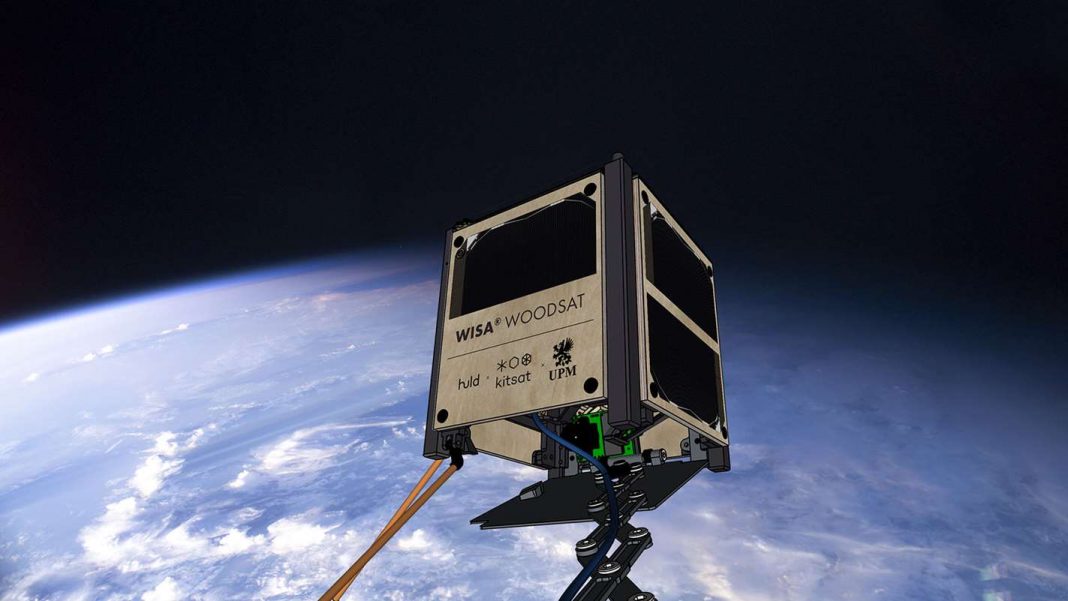WISA Woodsat is a nanosatellite designed and built by Arctic Astronautics, and it is based on the Kitsat educational satellite. The satellite measures roughly 10 x 10 x 10 cm and weighs one kilogram. A suite of onboard sensors, including two cameras will be used to monitor the specially coated WISA®-Birch plywood. One of these cameras is situated on a deployable boom for exterior imaging. The space materials laboratory of the European Space Agency will also provide a novel sensor suite for the mission. And all of this will be powered by nine small solar cells.
“The Wooden satellite with a selfie stick will surely bring goodwill and raise smiles, but essentially this is a serious science and technology endeavor. In addition to testing plywood, the satellite will demonstrate accessible radio amateur satellite communication, host several secondary technology experiments, validate the Kitsat platform in orbit, and popularize space technology to the public”, says WISA Woodsat mission manager Jari Mäkinen from Arctic Astronautics.
“UPM’s mission as a company is to create a future beyond fossils. WISA Woodsat is made of plywood and it carries a profound message of replacing fossils with renewable wood-based materials also in very demanding applications. Houston, we have a solution”, says Ari Voutilainen, the space project manager for UPM Plywood.

“Huld is extremely proud to be part of this mission as it combines Huld’s main competence areas, space and mechanical design. We foresee a lot of possibilities in the future by using the know-how developed in this mission”, says Matti Anttila, Space Business Development Director from Huld.
WISA Woodsat will be launched to polar orbit by Rocket Lab’s Electron launch vehicle. The launch will take place from the Mahia Peninsula launch complex in New Zealand. The satellite will orbit the Earth at an altitude of 500–550 kilometers, completing a full orbit every hour and a half.
Rocket Lab’s Senior Vice President of Global Launch Services, Lars Hoffman, said: “We’re proud to provide access to orbit for this innovative mission and we’re excited to see teams like UPM, Arctic Astronautics and Huld pushing boundaries.”
The manufacturing of the satellite is ongoing and next up are the tests required for a ticket to ride the rocket. All these activities can be followed on the mission website and blog.
According to wisaplywood.com















